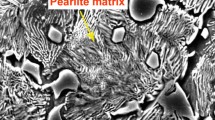Abstract
In this research paper, a statistical exponential model was prepared for the determination of chip thickness during turning process of alloy steel by response surface methodology (RSM) with design of experiment method. The relationship between the chip thickness and machining conditions were analyzed. In the prediction of predictive models, cutting speed, feed rate, depth of cut and tool geometry (effective tool nose radius) were considered as input model variables and chip thickness was considered as response variable in the output form. The determined statistical model shows that the feed rate is the main influencing factor on chip thickness followed by tool nose radius and depth of cut. It increases with increase in feed rate but decreases with increase in cutting velocity and tool nose radius, respectively. The predicted values were found similar to the actual values.
Access this chapter
Tax calculation will be finalised at checkout
Purchases are for personal use only
Similar content being viewed by others
References
Kalpakjian S (2000) Manufacturing process for engineering materials, 3rd edn, pp 467–4727. Addison-Wesley, Menlo Park, Calif, USA
Montgomery DC (2010) Design and analysis of experiments, 3rd edn. John Willy and Sons, New York, USA, pp 521–568
Zhou M, Chen Y, Zhang G (2020) Force prediction and cutting-parameter optimization in micro-milling Al7075-T6 based on response surface method. J Micro Mach 11(8):766. https://doi.org/10.3390/mi11080766
Lu XH, Jia ZY, Wang H, Feng YX, Liang SY (2019) The effect of cutting parameters on micro-hardness and the prediction of Vickers hardness based on a response surface methodology for micro-milling Inconel 718. Measurement 140:56–62
Przestacki D, Chwalczuk T, Wojciechowski S, (2017) The study on minimum uncut chip thickness and cutting forces during laser-assisted turning of WC/NiCr clad layers. Int J Adv Manuf Technol 91:3887–3898. https://doi.org/10.1007/s00170-017-0035-5
Abhang LB, Hameedullah M (2019) Wear behaviour of carbide tool during machining of steel SSRN: https://ssrn.com/abstract=3332379
Abhang LB, Hameedullah M (2011) Statistical modelling of surface roughness produced by wet turning using soluble-oil water mixture lubricant. Int J Manuf Mater Sci 1(1):26–30
Abhang LB, Hameedullah M (2010) Chip-tool interface temperature prediction model for turning process. Int J Eng Sci Technol 2(4):382–393
Abhang LB, Hameedullah M (2011) Empirical modeling of turning parameters using grey relational analysis. Appl Mech Mater 110–116:2596–2603
Bhushan RK (2020) Multi-response optimization of parameters during turning of AA7075/ SiC composite for minimum surface roughness and maximum tool life. Silicon. doi: s12633-020-00640
Sreenivasulu R (2016) Taguchi based optimization for surface roughness and chip thickness during end milling process on aluminium 6351-t6 alloy. Independent J Manage Prod 7(4)
Shultheiss F, Agmell M, Bushlya V, Stahl J-E (2018) Analysis of the minimum chip thickness during turning of duplex stainless steel. Proc Instit Mech Eng Part B J Eng Manuf 13
Kumar AR, Joshi KK, Das RK (2018) Analysis of chip reduction coefficient in turning of Ti-6Al-4 V ELI. In: The 3rd international conference on materials and manufacturing engineering. IOP Publishing
Mishra A (2016) Overview study of the machining of composite materials. Int J Res EngTechnol 4(7):1–8
Iqbal M, Tadjuddin M, Abhang LB (2020) Investigation of hole delamination in drillingkeblar composite panel using HSS drill tool. Defect Diffus Forum 402:108–114
Abhang LB, Iqbal M, Hameedullah M (2020) Optimization of machining process parameters using moora method. Defect Diffus Forum 402:81–89
Minitab: version-18 Document, 2018, www.minitab.com
Acknowledgements
The authors would like to express their thanks to the Department of mechanical engineering (AMU), for providing the laboratory for conducting experiments.
Author information
Authors and Affiliations
Corresponding author
Editor information
Editors and Affiliations
Rights and permissions
Copyright information
© 2021 The Author(s), under exclusive license to Springer Nature Singapore Pte Ltd.
About this chapter
Cite this chapter
Abhang, L.B., Iqbal, M., Hameedullah, M. (2021). An Experimental Model for the Prediction of Chip Thickness in Steel Turning. In: Akhyar (eds) Proceedings of the 2nd International Conference on Experimental and Computational Mechanics in Engineering. Lecture Notes in Mechanical Engineering. Springer, Singapore. https://doi.org/10.1007/978-981-16-0736-3_14
Download citation
DOI: https://doi.org/10.1007/978-981-16-0736-3_14
Published:
Publisher Name: Springer, Singapore
Print ISBN: 978-981-16-0735-6
Online ISBN: 978-981-16-0736-3
eBook Packages: EngineeringEngineering (R0)




